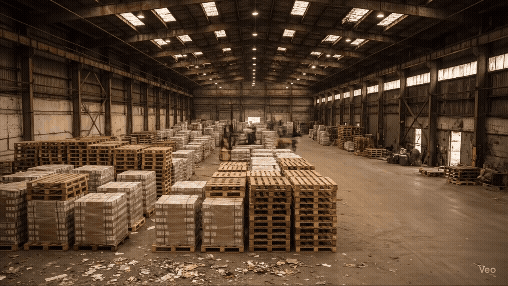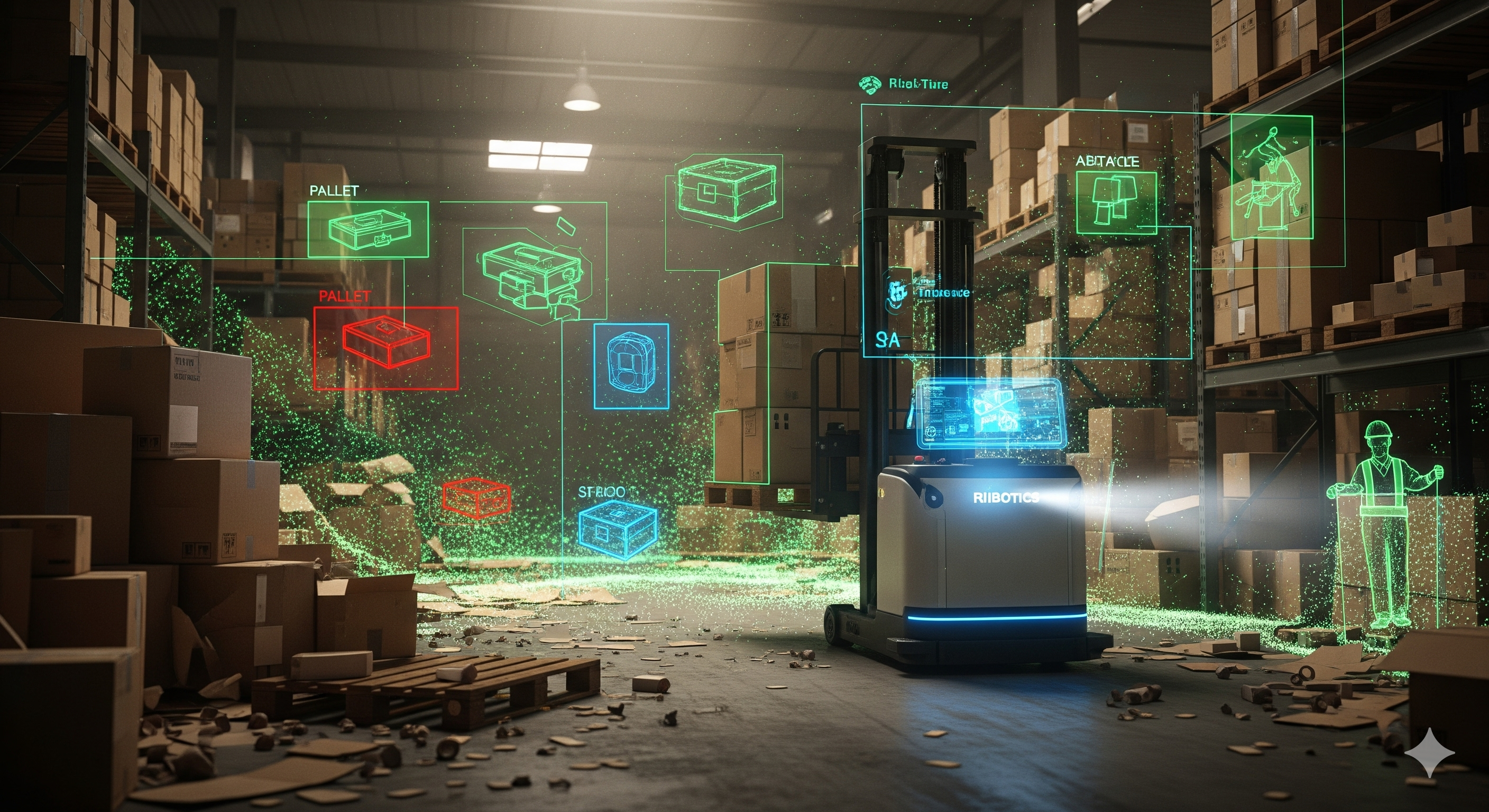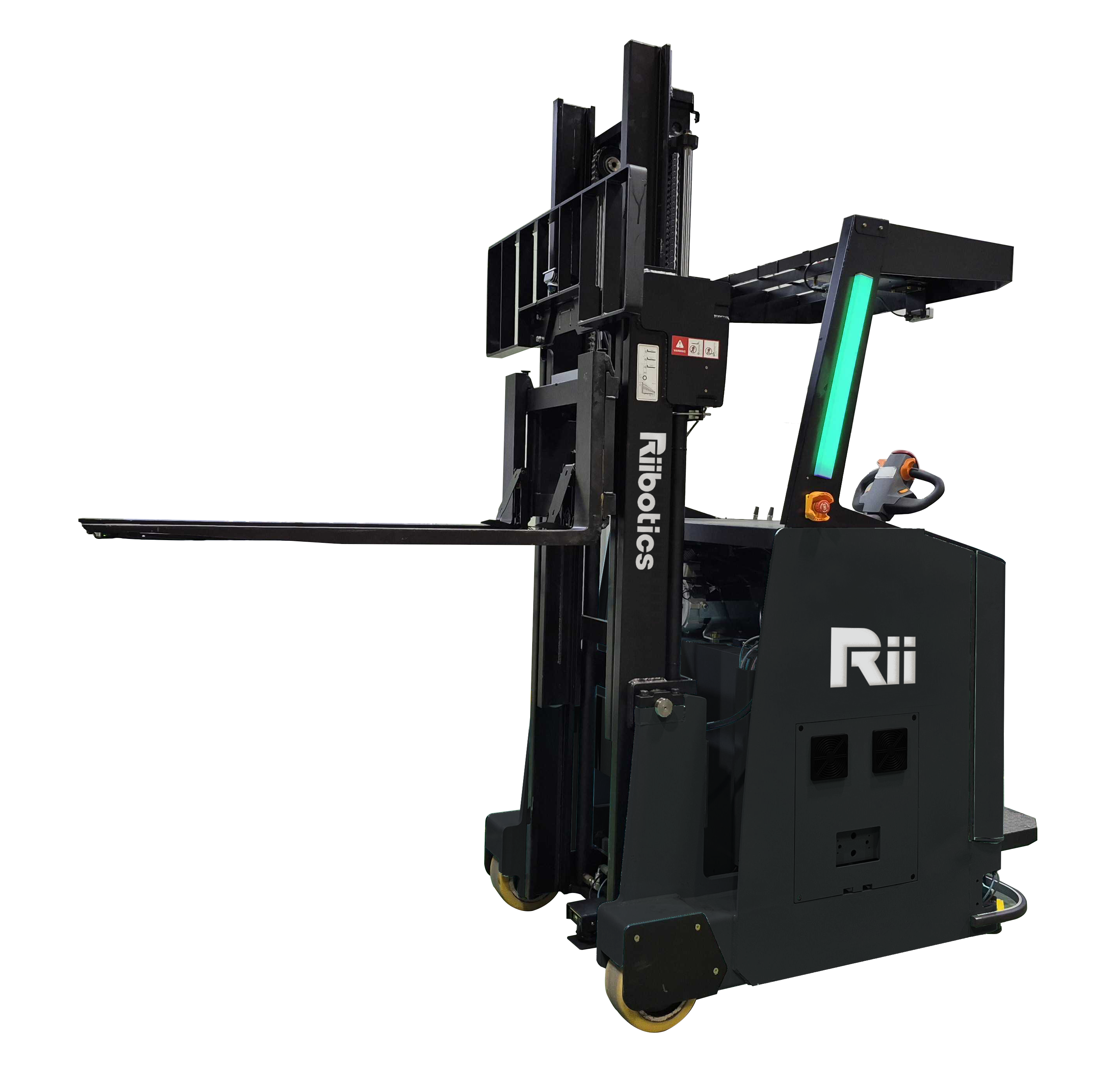
Defining 'Brownfield Robotics'

The Next Revolution in Industrial Automation
The Perception vs. Reality of Warehouse Automation
Flip on the news or scroll through a tech publication, and you'll see a vision of the future: sprawling, fully-automated warehouses where digital systems and mobile robots handle every task with seamless efficiency. It's an alluring image, a testament to what's possible with cutting-edge technology.
But what's the real picture?
The fact is, over 80% of warehouses today still rely on manual operations. While billion-dollar companies are innovating in so many areas, their most fundamental logistics tasks—like counting pallets or tracking inventory—are still often handled with a clipboard and a pen. This stark contrast between perception and reality highlights a massive, untapped opportunity.
The Urgent Need for Automation in Brownfield Facilities
For these existing facilities, often referred to as "brownfield sites," the lack of automation isn't just about falling behind the curve. It's a critical business issue. Severe labor shortages are just the tip of the iceberg. The deeper problems are rooted in massive productivity losses and serious safety risks.
Consider the human cost and financial impact of a single forklift accident: an average of $38,000 in damages and lost time. In a tragic, fatal case, the cost can soar beyond $150,000. For these businesses, automation is no longer an optional upgrade—it’s a necessity for survival and sustained growth. The demand for robotic solutions is undeniable. This "brownfield robotics" market represents a significant opportunity, estimated to be a trillion-dollar sector.
Why Existing Solutions Fall Short
Despite this urgent need, most conventional automation solutions are not built for the messy reality of brownfield environments. They are designed for a "greenfield" world—newly constructed, highly controlled spaces with predictable layouts and standardized workflows.
The challenges for brownfield integration are substantial and often overlooked:
-
Unstructured and Dynamic Environments: Traditional navigation systems struggle in brownfield settings, which are often cluttered, reconfigured frequently, and shared with human workers. An unexpected obstacle can bring an entire system to a halt.
-
Damaged and Random Materials: Greenfield projects can standardize pallet types and sizes and enforce strict material handling protocols with additional equipment like staging docks and conveyors. In a brownfield facility, materials are often damaged, pallets are non-uniform, and conditions are far from perfect. The robot must adapt to the facility, not the other way around.
-
Human-Robot Collaboration: Unlike fully automated greenfield projects, brownfield facilities require seamless interaction between robots and human workers. Designing a solution isn't just about technical specifications; it’s about understanding human behavior, workflow patterns, and safety protocols to ensure harmonious collaboration.
-
Complex and Costly Integration: Existing solutions typically require extensive, months-long deployments. They demand additional hardware, complex integration with legacy systems (like Warehouse Management Systems, or WMS), and significant on-site customization. This translates to high costs and delayed returns, making a compelling business case difficult for many customers.

The Solution: Designing for the Real World
"Brownfield Robots" are purpose-built to overcome these challenges. A successful solution must be defined by these key features:
-
Industrial-Grade Reliability: Flawless material handling is non-negotiable. This requires not only high-precision positioning but also a robust, end-to-end software stack and in-house algorithms capable of handling the endless "edge cases" of a brownfield environment.
-
Unrivaled Robustness: The robot must be able to handle the uncontrollable. This means leveraging advanced technologies like sensor fusion SLAM and sophisticated perception systems for truly autonomous navigation and material handling. The robot must be a problem-solver on its own.
-
Rapid and Intuitive Deployment: The solution must be fast and easy to implement. Our customers—the warehouse operators and managers—should be empowered to edit robot missions and adapt to frequent changes without deep technical knowledge. This requires intuitive software and a robot powered by "Robotic Foundation Model" that can understand and adapt to its environment and the materials it handles.

Pioneering the Future with Riibotics
At Riibotics, we are at the forefront of this industrial revolution. We are not building robots for a hypothetical future; we are building solutions for the warehouses of today. By focusing on the unique challenges and opportunities of brownfield facilities, we are delivering the reliable, robust, and user-friendly robotic solutions that will drive real-world productivity and safety.
Riibotics is proud to be a pioneer in the brownfield robotics revolution, empowering industrial innovation one warehouse at a time.

